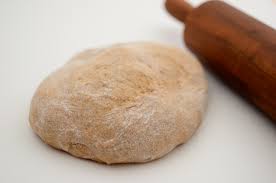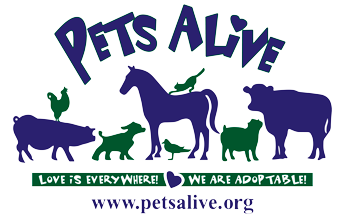During the months of November and December veterinarians treat many patients that encounter toxins. Certain foods and plant toxicants are more commonly associated with this time of year. Read further to learn more about some of the most common toxicities.
Chocolate
 Chocolate comes in a number of different options including dark chocolate, baker’s chocolate, white chocolate, and milk chocolate. By far the worse and most toxic would be baker’s chocolate. A good rule of thumb would be the darker and the more bitter the chocolate the more dangerous for your pet. For example, a 44 pound dog would need to ingest approximately 14 oz. of milk chocolate, or 4.5 oz. of semi-sweet chocolate, or 2 oz. of unsweetened chocolate to cause moderate signs of toxicity.
Chocolate comes in a number of different options including dark chocolate, baker’s chocolate, white chocolate, and milk chocolate. By far the worse and most toxic would be baker’s chocolate. A good rule of thumb would be the darker and the more bitter the chocolate the more dangerous for your pet. For example, a 44 pound dog would need to ingest approximately 14 oz. of milk chocolate, or 4.5 oz. of semi-sweet chocolate, or 2 oz. of unsweetened chocolate to cause moderate signs of toxicity.
Signs of chocolate toxicosis can be observed within a few hours, up to 10-12 hours following ingestion. Often dogs will develop restless behavior, vomiting, diarrhea and in the most extreme cases seizures or sudden death. The compounds in chocolate can be detrimental to the intestinal tract but more concerning, the cardiovascular system.
Grapes and Raisins
 Grapes and raisins have been associated with the development of acute kidney injury/failure when ingested by dogs. Common kitchen items found during the holidays that may contain grapes or raisins include holiday fruitcake, baked goods containing raisins, chocolate covered raisings, stuffing, etc. While 50% of dogs that ingest grapes or raisins may never develop any kidney issues it is always best to have them evaluated and treated. The risk associated with lack of treatment can be devastating as often the kidney failure is not treatable in the later stages.
Grapes and raisins have been associated with the development of acute kidney injury/failure when ingested by dogs. Common kitchen items found during the holidays that may contain grapes or raisins include holiday fruitcake, baked goods containing raisins, chocolate covered raisings, stuffing, etc. While 50% of dogs that ingest grapes or raisins may never develop any kidney issues it is always best to have them evaluated and treated. The risk associated with lack of treatment can be devastating as often the kidney failure is not treatable in the later stages.
Unbaked Bread Dough
 Yeast-containing unbanked bread dough is not a common toxicant but we do see it more during the winter holiday season and Easter. Commonly found in pizza dough, roll products, and sourdough “starters”, unbaked bread dough can cause both alcohol poisoning and bloat when ingested. When the dough hits the warm, most environment of the stomach (acting as an oven), it causes the yeast to ferment and produces carbon dioxide and ethanol. This increase in gas production can cause gastric dilatation-volvulus (GDV), which can be life threatening. Immediate veterinary medical attention is advised.
Yeast-containing unbanked bread dough is not a common toxicant but we do see it more during the winter holiday season and Easter. Commonly found in pizza dough, roll products, and sourdough “starters”, unbaked bread dough can cause both alcohol poisoning and bloat when ingested. When the dough hits the warm, most environment of the stomach (acting as an oven), it causes the yeast to ferment and produces carbon dioxide and ethanol. This increase in gas production can cause gastric dilatation-volvulus (GDV), which can be life threatening. Immediate veterinary medical attention is advised.
Holiday Plants
 Poinsettias are common plant ingestion around the holidays. However, ingestion is not life threatening and often we appreciate drooling, vomiting, and diarrhea, even in the most severe cases of ingestion. Other holiday plants such as holly and mistletoe can also cause the same symptoms. The most dangerous flower or plant is the common “true” lily such as Easter, tiger, Japanese show, stargazer, rubrum, and day lily. These plants may be found in floral arrangements brought into the home as gifts. All parts of the plant, including the pollen and water in the vase are toxic to cats. Ingestion will result in severe kidney failure. Some symptoms of ingestion include vomiting, depression, and anorexia. Treatment includes aggressive intravenous fluid therapy with close monitoring in the hospital. Delay in seeking veterinary care can result in death.
Poinsettias are common plant ingestion around the holidays. However, ingestion is not life threatening and often we appreciate drooling, vomiting, and diarrhea, even in the most severe cases of ingestion. Other holiday plants such as holly and mistletoe can also cause the same symptoms. The most dangerous flower or plant is the common “true” lily such as Easter, tiger, Japanese show, stargazer, rubrum, and day lily. These plants may be found in floral arrangements brought into the home as gifts. All parts of the plant, including the pollen and water in the vase are toxic to cats. Ingestion will result in severe kidney failure. Some symptoms of ingestion include vomiting, depression, and anorexia. Treatment includes aggressive intravenous fluid therapy with close monitoring in the hospital. Delay in seeking veterinary care can result in death.
The holidays are a great time of year to spend with family and friends but it is also a time to be on high alert for potential toxicants that can cause severe damaged to your furry family member. Be sure to take proper safety precautions when it comes to all baked goods and gifts from family and friends. If you are ever in doubt or have a question it is best to be proactive and consult your family veterinarian.
Happy Holidays from Dr. Joe!
Dr. Joseph A. D’Abbraccio, D.V.M.
President and Chairman of the Board, Pets Alive


